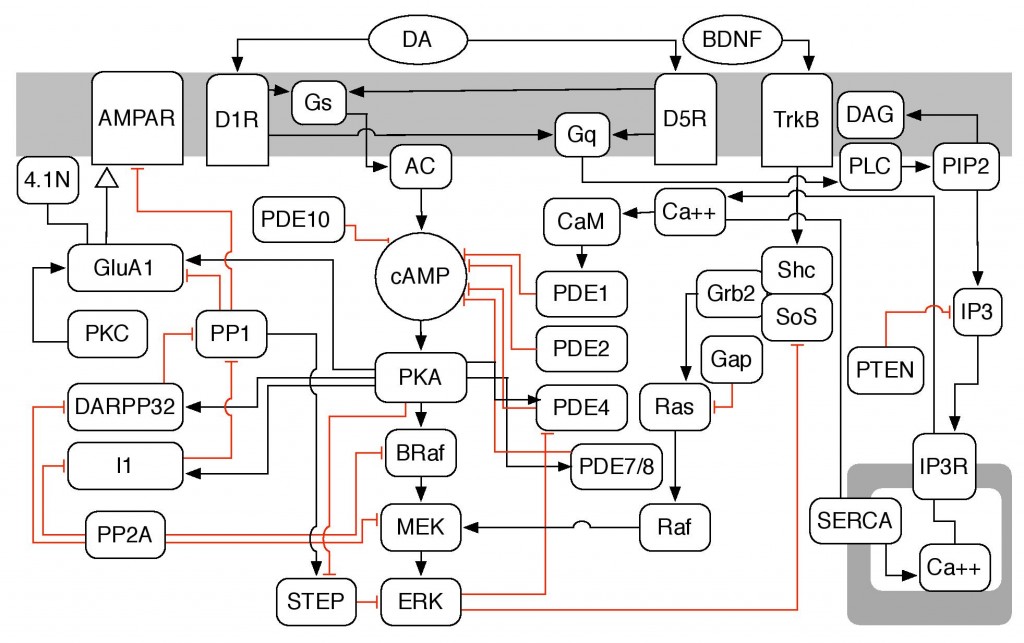Dopamine neurotransmission is dysregulated in a number of neurological and psychiatric diseases, such as Parkinson’s disease and drug addiction, resulting in maladaptive synaptic plasticity that drives the clinical manifestation of these disorders. There is a pressing need to understand the molecular mechanisms that underlie synaptic plasticity in order to develop novel therapeutic approaches to treat these disorders.
One of the key subcellular events underlying synaptic plasticity is the trafficking of neurotransmitter receptors (such as AMPAR and GABAAR) between vesicular reservoirs and the postsynaptic membrane. This modulation the trafficking in and out the post-synaptic membrane is complex and requires the orchestration of intracellular cyclic nucleotide signaling. Cellular cyclic nucleotide levels are determined by phosphodiesterases (PDEs), enzymes that degrade cellular cAMP and cGMP, making PDEs key regulators of AMPAR trafficking
Our research interests are divided into three areas, but the unified theme is to decipher the role of PDEs in the trafficking of neurotransmitter receptors and synaptic responsiveness:
- How does regulation of PDE activity affect receptor trafficking? How does PDE regulation alter membrane excitability and synaptic responsiveness?
- Control of AMPAR trafficking by ERK regulation of PDE4
- How does the interplay of multiple PDE activities affect receptor trafficking and influence membrane excitability and synaptic responsiveness?
- Can the spatial regulation of receptor trafficking by PDEs affect synaptic responsiveness?

